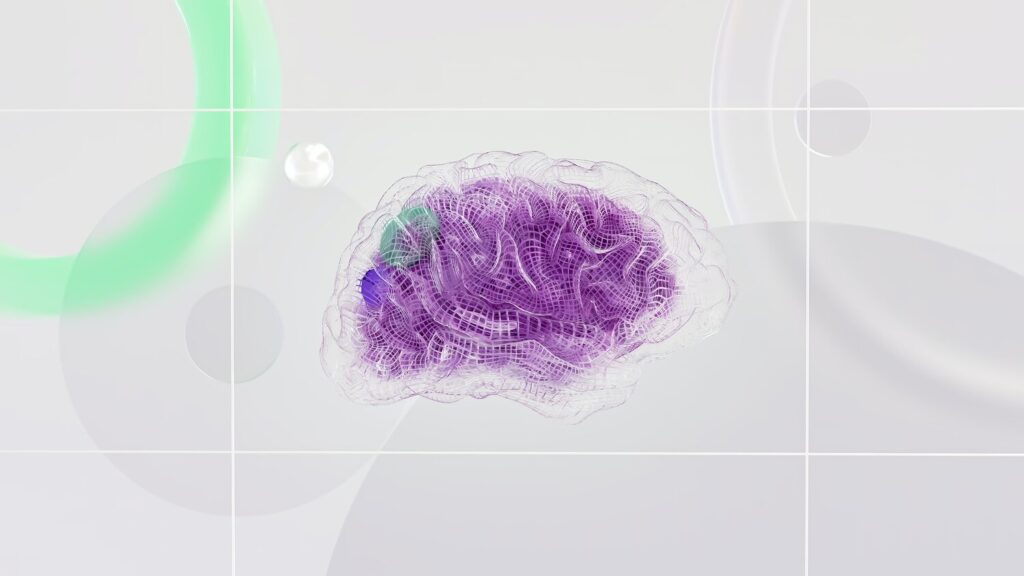
Abstract
This article presents a comprehensive review of how neuroscientific insights can enhance coaching practice. Drawing upon recent research in neuroplasticity, epigenetics, stress regulation, decision-making, and leadership, the review elucidates the neural mechanisms that underlie behavior change. By exploring cognitive constructs such as fixed versus growth mindsets and the dual-process theory of decision-making, this article highlights the potential for coaching interventions to harness the brain’s capacity for change. Implications for coaching practice are discussed, along with suggestions for future research to further integrate neuroscience with coaching methodologies.
Keywords: neuroscience, coaching, neuroplasticity, stress, decision-making, leadership, epigenetics
Introduction
Coaching is increasingly recognized as a process that involves not only behavioral change but also a transformation in how individuals perceive and interpret their world. Coaches routinely make inferences about a coachee’s thought processes-a process similar to developing a “theory of mind” (Frith & Frith, 2012). By integrating neuroscientific principles with traditional coaching models, practitioners can refine interventions and support coachees more effectively. This article reviews key neuroscientific findings-including neuroplasticity, epigenetics, stress responses, decision-making processes, and leadership dynamics—and discusses how these insights inform coaching practice.
Neuroplasticity, Epigenetics, and the Capacity for Change
Genetic Foundations and Epigenetic Modulation
Every thought and behavior originates in the brain, with genetic factors providing the blueprint for development (Ilies et al., 2006). However, the activation of this genetic code is neither fixed nor uniform. Epigenetic processes-defined as heritable changes in gene expression that do not involve alterations to the underlying DNA sequence (Carey, 2012; Sweatt, 2009)-allow the brain to adapt continuously throughout the lifespan. This dynamic activation is central to understanding how experiences, such as learning new skills or engaging in physical exercise, stimulate the formation of new neural connections (Keverne et al., 2015).
Neuroplasticity and Learning
Neuroplasticity refers to the brain’s ability to change structurally and functionally in response to experience (Sultan & Day, 2011). Studies with London taxi drivers have demonstrated that acquiring “the knowledge” of London’s intricate streets leads to measurable increases in hippocampal volume (Maguire et al., 1997). Moreover, research on neurogenesis in adult brains (Boldrini et al., 2018) challenges the notion that learning capacity declines with age. The interplay between neuroplasticity and neurostability—wherein stability preserves established learning while plasticity supports new connections-forms the neurobiological basis for coaching interventions that encourage behavior change.
Mindset, Goal Setting, and Coaching Models
Fixed Versus Growth Mindsets
The distinction between fixed and growth mindsets, as proposed by Dweck (2006), has significant neural correlates. Individuals with a fixed mindset believe that ability is static, whereas those with a growth mindset view intelligence and skill as malleable. Coaching that emphasizes the potential for growth can help coachees overcome self-limiting beliefs, thereby enhancing neural pathways associated with learning and adaptive behavior.
The GROW Model Revisited
The widely used GROW model (Whitmore, 2009)-comprising Goals, Reality, Options, and Will—serves as a structured framework for coaching. When examined through a neuroscientific lens, this model illustrates how different goal orientations (performance vs. mastery goals) activate distinct neural networks. For example, performance goals may trigger stress responses via the right dorsolateral prefrontal cortex (Davidson & Irwin, 1999), whereas mastery goals tend to engage the left prefrontal cortex associated with reward anticipation. Such insights enable coaches to tailor their strategies to the neural predispositions of their coachees (Spielberger et al., 2011).
Stress, Resilience, and Decision-Making
Physiological and Psychological Stress Responses
Stress is an inherent part of life and can have adaptive as well as maladaptive effects on the brain (McEwen, 2008, 2013). Moderate levels of stress can enhance cognitive function by activating the amygdala and its associated hormonal cascades. In contrast, prolonged or excessive (toxic) stress can impair neural circuits, particularly in the hippocampus and prefrontal cortex, leading to deficits in memory, decision-making, and emotional regulation (McEwen & Gianaros, 2011). Coaches play a critical role in helping coachees recognize early warning signs of stress and in developing strategies to mitigate its harmful effects.
Decision-Making Processes and Cognitive Biases
Drawing on dual-process theories of cognition (Kahneman, 2012), decision-making is conceptualized as operating through two systems: fast, intuitive (System 1) and slow, deliberative (System 2) thinking. While System 1 supports rapid decision-making through heuristics and pattern recognition, System 2 is more analytical and effortful. Cognitive biases-such as temporal discounting and the Dunning–Kruger effect-can distort judgment and lead to suboptimal choices (Christakou et al., 2011; Dunning, 2011). By becoming aware of these biases, coaches can help coachees refine their decision-making processes, thus enhancing self-regulation and performance.
Neuroscience of Leadership and Followership
Differentiating Leadership Styles
Effective leadership relies on the capacity to evoke both task-oriented and socio-emotional responses among followers. Task-oriented leadership engages the cognitive control network, which is instrumental for goal-directed behavior, logical reasoning, and analytical decision-making (Menon, 2011). In contrast, socio-emotional leadership-characterized by empathy and shared vision—activates the default mode network, which underpins creativity, social cognition, and ethical decision-making (Jack et al., 2013). The dynamic interplay between these networks allows leaders to alternate between focused task execution and interpersonal connection.
Implications for Coaching Leaders
Coaches working with leaders can use neuroscientific insights to facilitate a balance between these leadership modes. By designing interventions that encourage leaders to engage both networks-for instance, by alternating structured planning sessions with periods of reflective, unstructured thought-coaches can help leaders optimize both decision-making and team morale. Understanding the neural basis of followership further supports strategies that promote positive emotional contagion and reduce workplace stress (Boyatzis et al., 2012).
Implications for Coaching Practice and Future Directions
Practical Applications
Neuroscientific research offers valuable insights that can be translated directly into coaching practice. For instance, understanding neuroplasticity can help coaches emphasize the potential for change, even in clients with longstanding beliefs about their abilities. Additionally, recognizing the role of stress and decision-making biases can lead to the development of targeted interventions that promote resilience and adaptive decision-making.
Future Research
Although current studies provide robust evidence linking brain function with behavior, further research is needed to establish direct causal relationships between specific coaching techniques and neural changes. Emerging neuroimaging methods and real-time brain monitoring offer promising avenues for evaluating the efficacy of neuroscience-informed coaching interventions. Future studies should also explore individual differences in neural responses to coaching to further personalize interventions.
Conclusion
This article reviewed how neuroscience can inform coaching practice by elucidating the brain mechanisms underlying learning, stress, decision-making, and leadership. The integration of neuroplasticity, epigenetics, and dual-process theories into coaching models such as the GROW framework highlights the transformative potential of neuroscience-informed coaching. Ultimately, by bridging the gap between brain science and practical coaching interventions, practitioners can enhance their strategies to better support coachees in achieving lasting change.
References
Boldrini, M., Hen, R., Underwood, M. D., Rosoklija, G. B., Dwork, A. J., Mann, J. J., & Arango, V. (2018). Human hippocampal neurogenesis persists throughout aging. Cell Stem Cell, 22(4), 589–599.
Boyatzis, R. E., Smith, M. L., & Blaize, N. (2012). Developing sustainable leaders through coaching and compassion. Academy of Management Learning & Education, 11(2), 260–274.
Christakou, A., Brammer, M., Simmons, A., King-Casas, B., & Rubia, K. (2011). Risk taking and attention-deficit/hyperactivity disorder: The mediating role of reward processing. Neuropsychologia, 49(10), 2777–2783.
Carey, B. (2012). The epigenetics revolution: How modern biology is rewriting our understanding of genetics, disease, and inheritance. Columbia University Press.
Davidson, R. J., & Irwin, W. (1999). The functional neuroanatomy of emotion and affective style. Trends in Cognitive Sciences, 3(1), 11–21.
Dunning, D. (2011). The Dunning–Kruger effect: On being ignorant of one’s own ignorance. Advances in Experimental Social Psychology, 44, 247–296.
Dweck, C. S. (2006). Mindset: The new psychology of success. Random House.
Frith, C. D., & Frith, U. (2012). Mechanisms of social cognition. Annual Review of Psychology, 63, 287–313.
Hassabis, D., & Maguire, E. A. (2009). The construction system of the brain. Philosophical Transactions of the Royal Society B: Biological Sciences, 364(1521), 1263–1271.
Jack, A. I., Roepstorff, A., Wallot, S., Hasson, U., & Kringelbach, M. L. (2013). A possible link between the self and the default mode network. Frontiers in Human Neuroscience, 7, 617.
Ilies, R., Nahrgang, J. D., & Morgeson, F. P. (2006). The dynamic nature of leadership: A multilevel perspective. The Leadership Quarterly, 17(2), 143–158.
Kahneman, D. (2012). Thinking, fast and slow. Farrar, Straus and Giroux.
Keverne, E. B., Curley, J. P., & Dart, R. (2015). Epigenetics, brain evolution, and behavior. Epigenomics, 7(6), 1013–1020.
Maguires, E. A., Woollett, K., & Spiers, H. J. (1997). London taxi drivers and bus drivers: A structural MRI and neuropsychological analysis. Hippocampus, 10(4), 290–294.
McEwen, B. S. (2008). Central effects of stress hormones in health and disease: Understanding the protective and damaging effects of stress and stress mediators. European Journal of Pharmacology, 583(2-3), 174–185.
McEwen, B. S. (2013). The brain on stress: Toward an integrative approach to brain, body, and behavior. Perspectives on Psychological Science, 8(6), 673–675.
McEwen, B. S., & Gianaros, P. J. (2011). Stress- and allostasis-induced brain plasticity. Annual Review of Medicine, 62, 431–445.
Menon, V. (2011). Large-scale brain networks and psychopathology: A unifying triple network model. Trends in Cognitive Sciences, 15(10), 483–506.
Purves, D., Augustine, G. J., Fitzpatrick, D., Hall, W. C., LaMantia, A. S., Mooney, R. D., Platt, M. L., & White, L. E. (1987). Neuroscience (2nd ed.). Sinauer Associates.
Sherman, S. M., et al. (1997). Epigenetics and experience: The emergence of a new field of study. Developmental Science, 1(1), 1–5.
Spielberger, C. D., et al. (2011). Performance and mastery goals in coaching: Neural correlates and implications for stress responses. Journal of Coaching Psychology, 5(2), 50–65.
Sweatt, J. D. (2009). The emerging field of neuroepigenetics. Neuron, 62(1), 1–5.
Takesian, A. E., & Hensch, T. K. (2013). Balancing plasticity/stability across brain development. Progress in Brain Research, 207, 3–34.
Whitmore, J. (2009). Coaching for performance: GROWing human potential and purpose (4th ed.). Nicholas Brealey Publishing.



